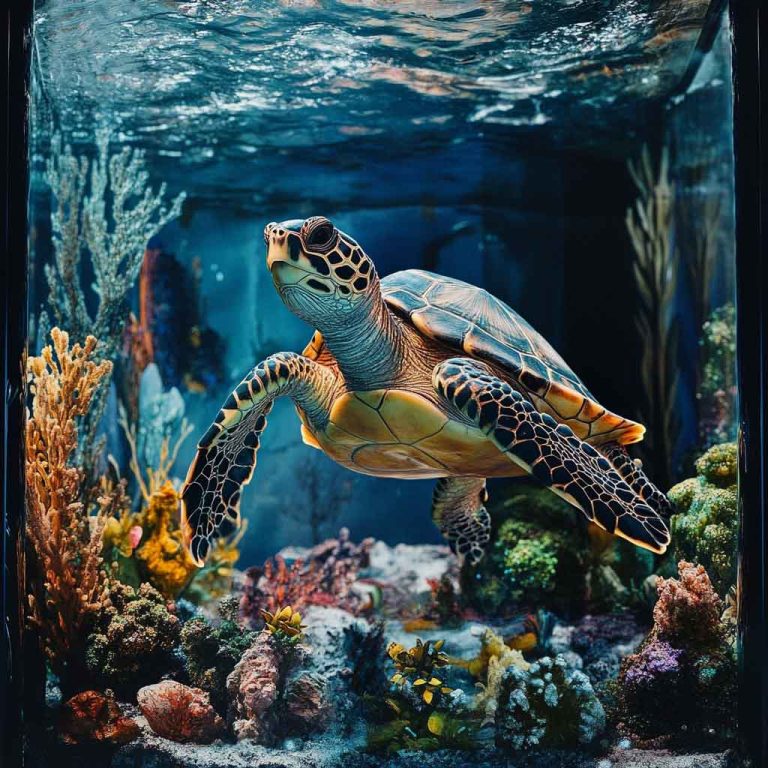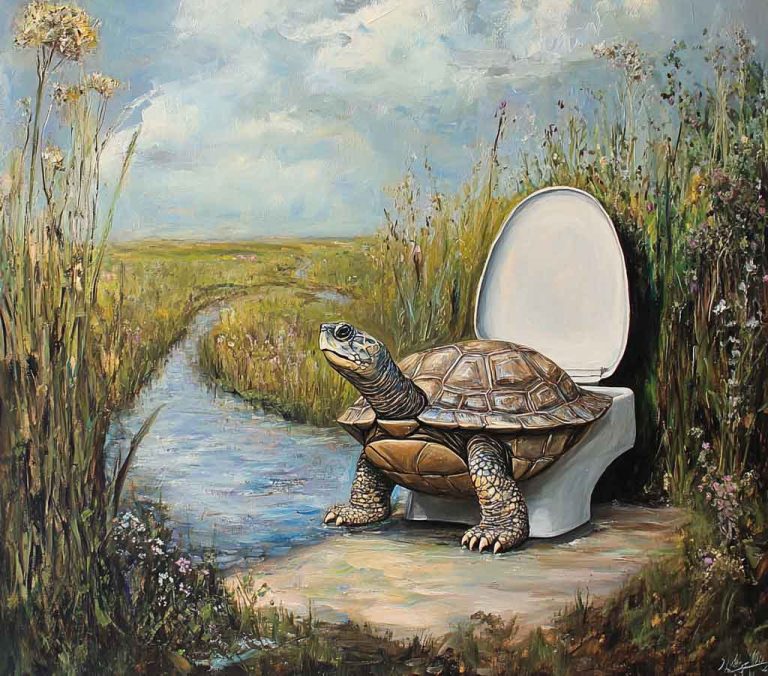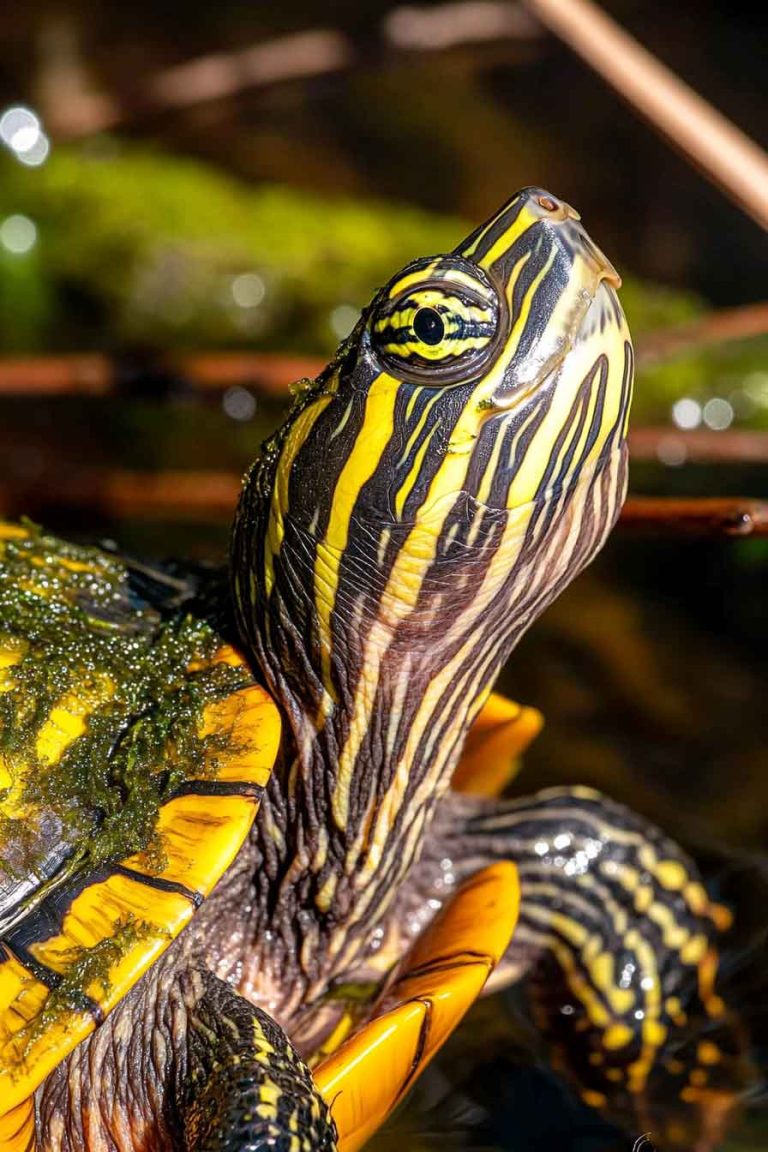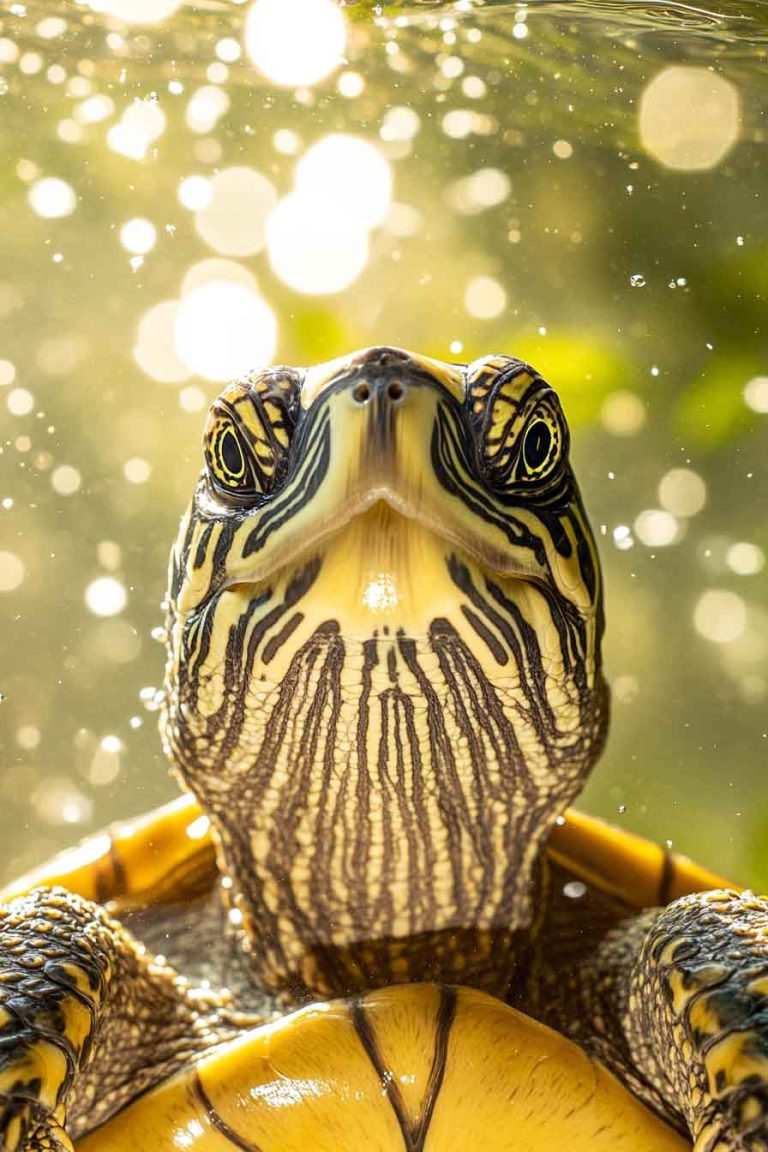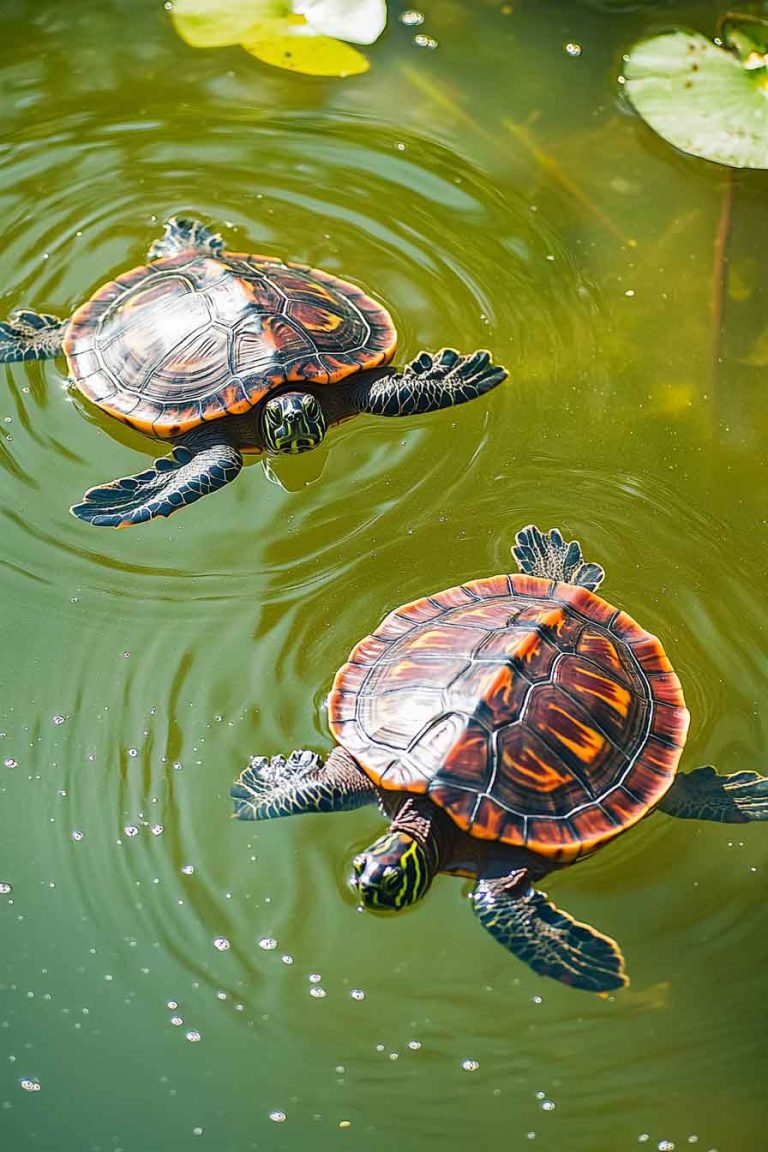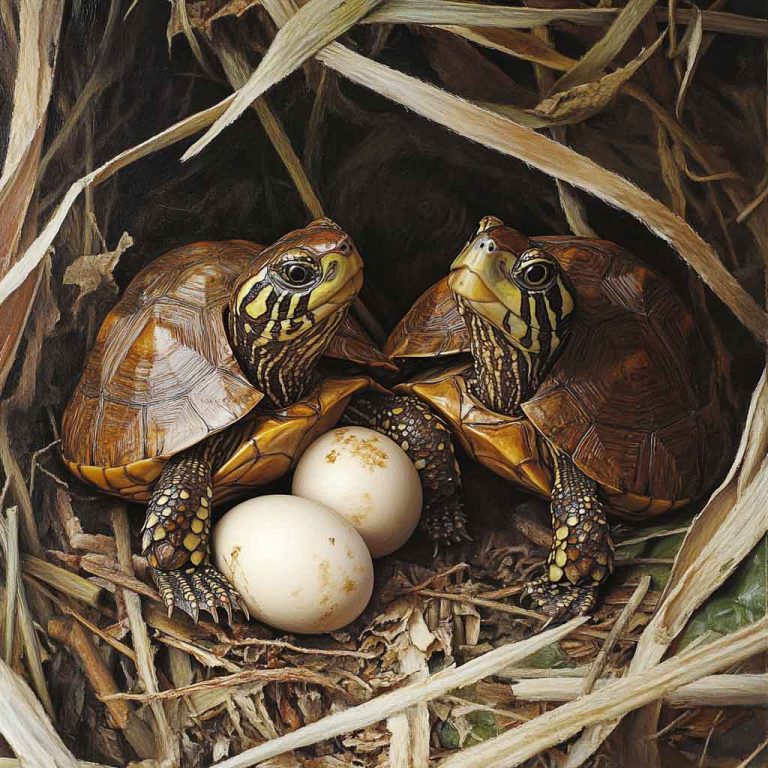African Helmeted Turtle Care: A Complete Guide for Beginners
Hey there, turtle enthusiast! If you’re thinking about bringing an African Helmeted Turtle into your home or already have one, you’re in for a treat. These little guys, also known as African side-necked turtles, are fascinating pets with unique personalities. I’ve spent years caring for these turtles, and I’m excited to share everything you need…
Hey there, turtle enthusiast! If you’re thinking about bringing an African Helmeted Turtle into your home or already have one, you’re in for a treat. These little guys, also known as African side-necked turtles, are fascinating pets with unique personalities. I’ve spent years caring for these turtles, and I’m excited to share everything you need to know to keep your turtle happy and healthy. In this guide, we’ll cover their basic needs, tank setup, and what makes them thrive. Let’s dive in!
Why Choose an African Helmeted Turtle?
I’ll be honest—African Helmeted Turtles aren’t as common as red-eared sliders, but they’re just as rewarding. These turtles are small, hardy, and full of character. Their side-necked way of tucking their heads (instead of pulling them straight back) is adorable and sets them apart. Plus, they’re active swimmers and love exploring their environment, which makes them fun to watch.
But before you commit, know that these turtles can live for 25-50 years with proper care. That’s a long-term commitment! I’ve found that their curious nature and low-maintenance needs make them perfect for both beginners and experienced reptile keepers. Ready to learn how to care for them? Let’s start with the basics.
Understanding Their Natural Habitat
To give your African Helmeted Turtle the best life, you need to mimic their natural environment. In the wild, these turtles live in slow-moving rivers, ponds, and marshes across sub-Saharan Africa. They love warm, shallow water where they can swim, bask, and forage for food. I always tell new owners: think of their tank as a mini African wetland!
Here’s what they need to feel at home:
- Water: They’re aquatic turtles, so water is their main hangout. They need enough to swim comfortably.
- Basking area: A dry, warm spot to soak up heat and UVB light.
- Warm temperatures: These turtles thrive in warm climates, so you’ll need to keep their tank cozy.
- Hiding spots: They like to feel secure, so plants or caves are a must.
Recreating this setup isn’t hard, but it takes some planning. Let’s break down the essentials of their tank setup next.
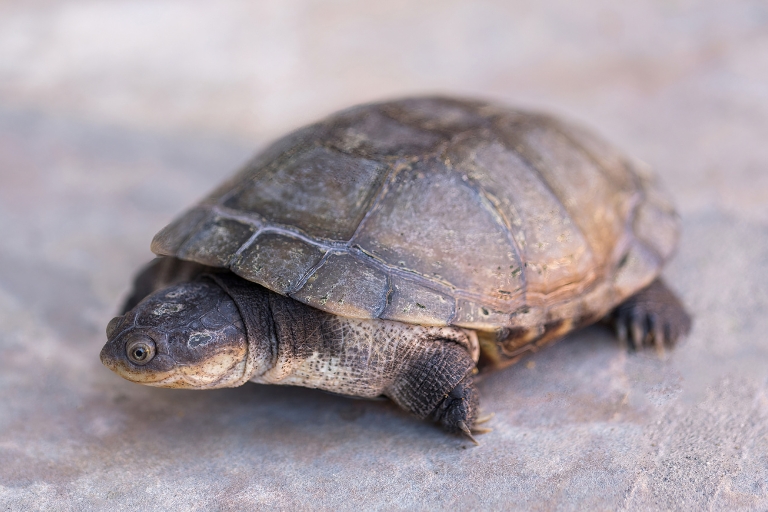
Setting Up the Perfect Tank
When I set up my first African Helmeted Turtle tank, I was surprised at how much thought went into it. But trust me, getting it right makes all the difference. Here’s what you need to create a cozy home for your turtle.
Tank Size
These turtles don’t grow huge—adults reach about 6-8 inches—but they’re active and need space. I recommend a minimum of 40 gallons for one turtle. If you have two, go for at least 75 gallons. The tank should be wider than it is tall since they love swimming horizontally. A good rule of thumb is 10 gallons per inch of shell length, measured vertically.
Water Quality and Filtration
Clean water is non-negotiable. African Helmeted Turtles are messy eaters, and their waste can quickly dirty the tank. I learned this the hard way when my turtle’s water got cloudy in just a few days! Invest in a canister filter rated for at least twice your tank’s volume. For a 40-gallon tank, get a filter for 80 gallons or more. Change 25-50% of the water weekly to keep it fresh, and test the water regularly for ammonia, nitrites, and nitrates.
Water Temperature
These turtles love warm water, just like their African homeland. Keep the water between 75-80°F (24-27°C). I use a submersible aquarium heater to maintain a steady temperature. Check it with a reliable thermometer, because fluctuations can stress your turtle.
Basking Area
Your turtle will spend a lot of time basking, so give them a sturdy, dry platform. I like using a floating dock or a stack of flat rocks that reach above the waterline. The basking spot should be 85-90°F (29-32°C) under a heat lamp. Don’t forget a UVB bulb—it’s critical for their shell and bone health. Replace the UVB bulb every 6-12 months, even if it’s still glowing, as the UVB output fades over time.
Substrate and Decor
For the tank bottom, I stick with bare-bottom tanks or large river rocks. Small gravel can be a pain to clean and might get eaten by mistake. Add some aquatic plants (real or fake) and hiding spots like caves or driftwood. These give your turtle places to explore and feel safe. Just make sure everything is smooth to avoid injuring their shell.
Feeding Your African Helmeted Turtle
Now that you’ve got the tank set up, let’s talk about feeding your African Helmeted Turtle. I remember how excited I was to figure out what my turtle loved to eat—it’s like unlocking their personality! These turtles are omnivores, so they need a balanced diet of protein, veggies, and occasional treats. Here’s how to keep their bellies happy.
What to Feed Them
In the wild, African Helmeted Turtles munch on insects, small fish, plants, and even carrion. To mimic this, I offer a mix of:
- Commercial turtle pellets: Look for high-quality brands with at least 30-40% protein. These are a great base for their diet.
- Protein sources: Offer live or frozen foods like bloodworms, shrimp, or small feeder fish (guppies or minnows). I give these 2-3 times a week for adults, more often for juveniles.
- Vegetables: Romaine lettuce, kale, or dandelion greens are hits. I float these in the tank to encourage foraging.
- Occasional treats: A small piece of cooked chicken or fruit like apple can be a rare treat, but don’t overdo it—fruit is high in sugar.
A good rule is to feed adults every other day and juveniles daily. I feed mine in a separate container to keep the tank clean—trust me, it saves time on water changes!
How Much to Feed
Overfeeding is a common mistake I made early on. Your turtle will beg for food, but don’t fall for those cute eyes! Feed an amount they can eat in 5-10 minutes, about the size of their head (minus the neck). If there’s food left after 15 minutes, you’re giving too much. Obesity can lead to health issues, so keep portions in check.
Calcium and Supplements
To keep their shell strong, African Helmeted Turtles need calcium. I sprinkle a calcium powder (with vitamin D3) on their food once or twice a week. You can also leave a cuttlebone in the tank for them to nibble on—it’s like a turtle vitamin! Avoid over-supplementing, though, as too much can harm them.
Maintaining Their Health
Keeping your turtle healthy is all about observation and consistency. I check on my turtles daily to make sure they’re acting normal. Here are some key things to watch for and how to prevent common health issues.
Signs of a Healthy Turtle
A healthy African Helmeted Turtle is active, has clear eyes, and eats eagerly. Their shell should be hard and smooth, with no soft spots or cracks. I always look at their skin, too—it should be free of sores or white patches. If your turtle is swimming, basking, and exploring, you’re doing great!
Common Health Issues
Even with the best care, problems can pop up. Here are a few I’ve dealt with and how to handle them:
- Shell rot: This shows up as soft, discolored, or smelly patches on the shell. It’s often caused by dirty water or lack of basking. Clean the tank, improve filtration, and consult a vet for treatment.
- Respiratory infections: If your turtle is wheezing, floating unevenly, or has a runny nose, it might have a respiratory issue. This can happen if the water or air is too cold. Warm up the tank and see a vet ASAP.
- Vitamin A deficiency: Swollen eyes or poor appetite can signal this. A balanced diet with veggies and supplements usually prevents it, but a vet can prescribe injections if needed.
Regular Maintenance
I can’t stress this enough: a clean tank prevents most health problems. Stick to your weekly water changes and check the filter monthly to ensure it’s working. Also, keep an eye on the basking lamp and UVB bulb—replace them as needed to avoid burns or UVB deficiency. I also take my turtles to a reptile vet for an annual checkup, just to be safe.
Handling and Interaction
African Helmeted Turtles are fun to watch, but they’re not big on cuddles. I learned this when I tried picking up my turtle too often—he wasn’t thrilled! Here’s how to interact with them safely.
Handling Tips
Handle your turtle sparingly to avoid stress. When you do, support their body with both hands and keep them low over a soft surface in case they wiggle free. I always wash my hands before and after to prevent spreading germs. Never tap the tank or startle them—it can make them shy.
Bonding with Your Turtle
Bonding is more about trust than physical contact. I spend time near the tank, talking softly or feeding them by hand (with tongs for safety). Over time, my turtles started recognizing me and swimming up when I approached. It’s a slow process, but so rewarding when they get comfortable!
Social Needs and Tank Mates
One question I get a lot is whether African Helmeted Turtles can live with other turtles or fish. I’ve tried different setups over the years, and here’s what I’ve learned about their social behavior and compatibility.
Are They Social?
African Helmeted Turtles are mostly solitary. They don’t need a buddy to be happy, and in fact, they can get territorial, especially in smaller tanks. I once housed two turtles together, and one started bullying the other over basking spots. If you want multiple turtles, make sure the tank is large enough—add 40 gallons per extra turtle—and watch for signs of aggression, like biting or chasing.
Tank Mates
Adding fish or other animals can be tricky. African Helmeted Turtles see small fish as snacks, so I’ve had guppies disappear fast! If you want tank mates, try larger, fast-swimming fish like danios or plecos, but even then, it’s a gamble. Other turtle species can work if they’re similar in size and temperament, but I recommend sticking to one turtle per tank unless you’re an experienced keeper. Always have a backup plan, like a spare tank, in case they don’t get along.
Enrichment
To keep your turtle mentally stimulated, give them things to explore. I add floating toys, like ping-pong balls, or rearrange the tank decor every few months. You can also scatter food in different spots to encourage foraging. These little activities keep my turtles active and curious.
Common Questions About African Helmeted Turtles
As a turtle owner, I’ve heard every question under the sun. Here are some FAQs I get from new owners like you, along with my answers.
1. How long can African Helmeted Turtles stay out of water?
These turtles can stay out of water for about 6-8 hours without issues, as long as the environment is humid and not too hot or cold. They’ll come out to bask or explore, but they need water to stay hydrated and healthy. Don’t leave them out too long, as it can lead to dehydration.
2. How big do African Helmeted Turtles get?
Adults typically grow to 6-8 inches in shell length. Males are usually smaller than females. Their compact size makes them easier to house than larger species, but they still need plenty of swimming space.
3. Do they need a heater in their tank?
Yes, absolutely! I keep a heater in my tank to maintain water temperatures between 75-80°F (24-27°C). Without it, the water can get too cold, stressing your turtle or triggering brumation, which isn’t ideal for captive turtles.
Final Word
Caring for an African Helmeted Turtle has been one of the most rewarding parts of my life as a pet owner. These quirky, side-necked swimmers bring so much joy with their curious antics and low-maintenance needs. By setting up a proper tank, feeding them a balanced diet, and keeping their environment clean, you’re setting them up for a long, healthy life.
I hope this guide helps you feel confident in caring for your turtle. If you notice your turtle acting off—like avoiding water, not eating, or showing shell issues—don’t hesitate to check their tank conditions and consult a reptile vet. With a little love and attention, your African Helmeted Turtle will thrive and become a beloved part of your family.
Got more questions or need tips? Drop a comment below, and I’ll share more of my experiences. Happy turtle keeping!

